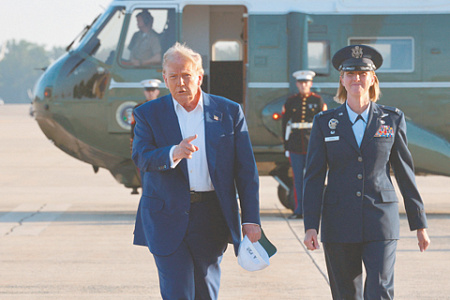
U.S. President Donald Trump arrived at the NATO summit in the Netherlands projecting confidence, declaring that the worst of the conflict with Iran was over. However, his optimistic claims of a halt to hostilities and the destruction of Iran’s nuclear program were immediately cast into doubt by fresh violence, suggesting the president’s declaration may have been premature. The ceasefire announced by Trump was quickly violated, and with no clear, undisputed assessment of the damage from U.S.-Israeli strikes, the only certainty is that the ruling regime in Tehran has survived the initial onslaught.
The sudden eruption of conflict in the Middle East threatened to completely reshape the agenda of the NATO summit in The Hague, originally intended to focus almost exclusively on increasing defense spending among member states. The U.S. strikes on Iran, carried out without the backing of Washington’s NATO allies, created a tense diplomatic backdrop. While allies refrained from outright condemnation, their unease was palpable. French President Emmanuel Macron, for instance, labeled the American attack on a sovereign nation “illegitimate” while simultaneously reiterating his country’s opposition to Iran acquiring nuclear weapons. Trump’s swift declaration of peace appeared calculated to position him as a triumphant leader arriving at the summit, rather than a president facing rebukes from his partners.
Hours before departing for The Hague, Trump took to his social media platform, Truth Social, to announce a breakthrough, framing it not just as a truce but as a definitive peace. “Israel and Iran came to me, almost at the same time, and they said, ‘Peace!’. I knew the time had come!” he wrote. According to the narrative pushed by the president and his team, joint U.S.-Israeli strikes successfully neutralized Iran’s nuclear program. A subsequent Iranian retaliatory strike on the Al Udeid air base in Qatar was dismissed as symbolic, with Vice President JD Vance claiming on Fox News that Iran had provided advance warning because it “does not want escalation and American deaths,” thus rendering further military action unnecessary.
In both Tehran and Jerusalem, Trump’s grand proclamation of peace seemed to catch officials by surprise. Iran, the weaker party, was the first to signal a willingness to de-escalate, seizing an opportunity to exit the confrontation without losing face. This did not, however, prevent a final, powerful missile attack on Israeli territory. A direct hit on a residential building in the city of Beersheba resulted in four fatalities, prompting an immediate vow of a symmetric response from Israeli Prime Minister Benjamin Netanyahu. According to U.S. and Israeli media, Netanyahu scaled back his plans after a phone call with Trump. The resulting Israeli strike targeted only a single Iranian radar installation, an act that nonetheless constituted a breach of the ceasefire and fueled suspicions that Trump had secured not a lasting peace, but merely a fragile pause for the summit’s benefit.
A critical question remains unanswered: the extent of the damage inflicted on Iran’s nuclear infrastructure, particularly the heavily fortified uranium enrichment facility at Fordow. Official statements from Tehran insist that no fatal damage was sustained, a claim directly contradicted by the White House. U.S. Pentagon officials have been more circumspect in their assessments, as have independent observers. Rafael Grossi, the Director-General of the International Atomic Energy Agency (IAEA), stated that the Fordow facility appears to have suffered “significant damage” but stressed that a precise evaluation is impossible without an on-site inspection. Such a visit seems unlikely, as Iran’s parliament considers legislation to prohibit all cooperation with the agency, further obscuring the true outcome of the strikes.
There were clear hopes in Israel that the strikes would destabilize the Iranian regime, a goal underscored by one Israeli strike that reportedly targeted the entrance to a prison holding political dissidents. President Trump’s own position on regime change appeared to waver within a 24-hour period. After initially implying that the U.S. hoped for a government overthrow in Tehran, he reversed course the next day. “Regime change leads to chaos,” Trump told reporters. “And ideally, you’d like to have no chaos.”
The military action has also ignited significant political fallout within the United States. By attacking Iran, Trump employed a strategy reminiscent of the neoconservative doctrine he has long railed against, alienating both his voter base and his political adversaries. Members of Congress are now demanding an explanation from the White House for launching an attack on a foreign power without congressional authorization. Furthermore, public opinion appears to be against the president’s decision. A recent poll conducted for CNN found that 56% of Americans disapprove of the strikes on Iran, with only 45% believing Trump’s actions were correct.
